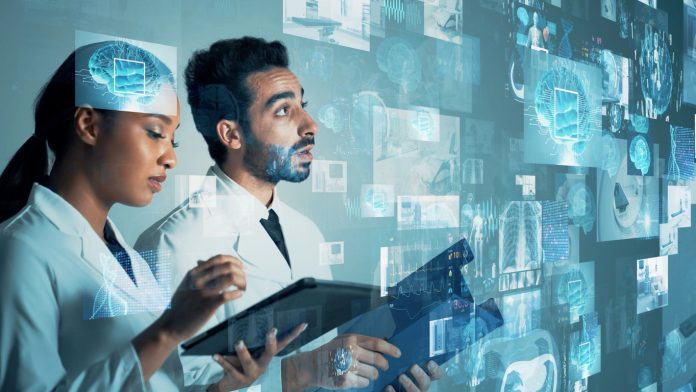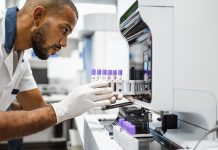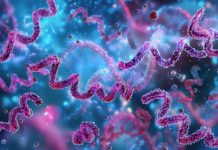Stanford researchers have developed an AI-powered “virtual scientist” capable of designing drug and vaccine candidates, marking a leap forward in biomedical research
In a significant leap for biomedical research, Stanford scientists have created an advanced AI-powered “virtual scientist” capable of generating drug and vaccine candidates with minimal human input. By simulating the work of expert researchers, this system has the potential to accelerate discovery significantly, streamline development timelines, and open new possibilities in how we approach complex diseases.
“Good science happens when we have deep, interdisciplinary collaborations where people from different backgrounds work together, and often that’s one of the main bottlenecks and challenging parts of research,” said James Zou, PhD, associate professor of biomedical data science, who led a study detailing the development of the virtual lab. “In parallel, we’ve seen this tremendous advance in AI agents, which, in a nutshell, are AI systems based on language models that can take more proactive actions.”
Advanced AI: Beyond ChatGPT
People often think of AI as just tools that answer questions, but the type used in this Stanford study is much more advanced. According to researcher James Zou, these AI systems can gather information, use different tools, and even communicate with each other and with humans in natural language. This kind of teamwork between AI models, known as agentic AI, lets them work together to tackle complex problems.
Inspired by this ability, Zou began training the models to think like top scientists: asking the right questions, exploring different ideas, and building on each other’s knowledge to form testable hypotheses. He believes this “virtual lab” could help speed up scientific breakthroughs in many areas where solutions are urgently needed.
Creating a virtual lab with virtual scientists
For the virtual lab, a human researcher gives the AI principal investigator, or AI PI, a scientific challenge, and the AI PI takes it from there. The virtual lab works similarly to any other research project, starting with a problem to solve.
“It’s the AI PI’s job to figure out the other agents and expertise needed to tackle the project,” Zou said.
One example of the virtual lab was the SARS-CoV-2 project, in which the PI virtual scientist created an immunology virtual agent, a computational biology virtual agent and a machine learning virtual agent. And, in every project, no matter the topic, there’s one virtual scientist who assumes the role of critic, who challenges the research findings and provides constructive feedback.
Zou and his team equipped the virtual scientists with tools and software systems, such as the protein modelling AI system AlphaFold, to better stimulate creative “thinking” skills. The virtual scientists would create their wish list, noting that they would ask for specific tools to support their research.
Furthermore, the virtual lab conducted regular meetings where the virtual scientists would generate ideas and engage in conversations. The scientists also had one-on-one meetings, allowing virtual scientists to meet with the PI agent individually to discuss ideas. These meetings would take seconds or minutes, and multiple meetings ran in parallel.
“By the time I’ve had my morning coffee, they’ve already had hundreds of research discussions,” Zou said during the RAISE Health Symposium, during which he presented on this work.
The virtual lab worked independently, aside from the initial prompt. The virtual scientists will only receive a guideline that outlines budgets, barring any extravagant ideas that cannot be validated in a physical lab. Human researchers have access to a transcript from the virtual lab, allowing them to track progress and redirect the project if needed.
“I don’t want to tell the AI scientists exactly how they should do their work. That really limits their creativity,” Zou said. “I want them to come up with new solutions and ideas that are beyond what I would think about.”
Virtual scientists develop a new vaccine for the recent COVID-19 strains
Zou’s team asked the virtual scientists to develop a vaccine against the recent COVID-19 variants. Instead of opting for the tried-and-true antibody (a molecule that recognizes and attaches to a foreign substance in the body), the AI team opted for a more unorthodox approach: nanobodies, a fragment of an antibody that’s smaller and simpler.
“From the beginning of their meetings, the AI scientists decided that nanobodies would be a more promising strategy than antibodies — and they provided explanations. They said nanobodies are typically much smaller than antibodies, so that makes the machine learning scientist’s job much easier, because when you computationally model proteins, working with smaller molecules means you can have more confidence in modeling and designing them,” Zou said.
The human researchers took the nanobody structural designs from the AI researchers and created them in their real-world lab. Not only did they find that the nanobody was experimentally feasible and stable, they also tested its ability to bind to one of the new SARS-CoV-2 variants – a key factor in determining the effectiveness of a new vaccine -and saw that it clung tightly to the virus, more so than existing antibodies designed in the lab.
The researchers measured off-target effects, or whether the nanobody errantly binds to something other than the targeted virus, and found it did not bind to anything other than the COVID-19 spike protein. “The other thing that’s promising about these nanobodies is that, in addition to binding well to the recent COVID strain, they’re also good at binding to the original strain from Wuhan from five years ago,” Zou said, referring to the nanobody’s potential to ground a broadly effective vaccine.
The human researchers are now analyzing the nanobody’s ability to help create a new vaccine and are eager to apply the virtual lab to other scientific questions.
“The datasets that we collect in biology and medicine are very complex, and we’re just scratching the surface when we analyze those data,” Zou said. “Often, the AI agents are able to come up with new findings beyond what the previous human researchers published on. I think that’s really exciting.”











